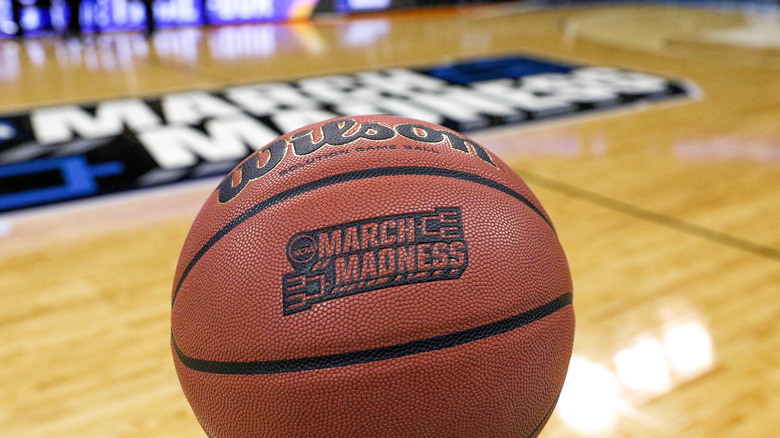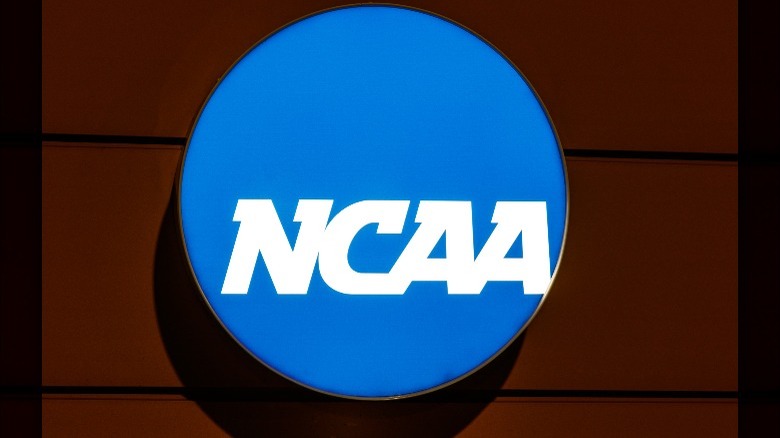Here's Where The Phrase March Madness Might Have Originated From
Every year, basketball fans get into the spirit of March Madness and watch as their favorite NCAA teams compete for the national championship. The first tournament was held in 1939, and back then, only eight teams battled it out on the basketball court, as reported by Street Directory. The first team to win the first NCAA tournament was the University of Oregon which went against the Ohio State University in the final game that was held on March 27 and ended 46-33. The tournament has since expanded to welcome 68 teams for the qualifiers, and the first women's basketball tournament was held in 1982 (via History).
The fascination with basketball tournaments, however, started years before in 1908. Back then, a statewide high school basketball tournament was held in Illinois every year, and Henry V. Porter — a teacher and coach at Athens High School in Illinois — noticed the excitement brought by the tournament, which he called March Madness, according to Time. The term stuck, and that's how the NCAA tournament is known today.
The March Madness essay
From 1929 to 1940, Henry V. Porter served as the assistant executive secretary of the Illinois High School Athletic Association. He was also the editor of the Illinois High School Association's journal called the Illinois High School Athlete (per IHSA). In March 1939, Porter penned an essay titled "March Madness" that was published in the journal, in which he expressed the excitement the basketball tournament brought to the state and the sport's fans.
In the essay, he refers to the month of March several times, the first of which was a reference to the tournament season, which read, " ... March when a hundred thousand pairs of rubber soled shoes slap the hardwood in a whirlwind of stops and dashes on the trail to the state basketball championships." He ended the essay by writing, "A little March madness may complement and contribute to sanity and help keep society on an even keel."
The Basketball Ides of March poem
Months after the very first NCAA championship was held in March 1939, World War II began and lasted until 1945. In the years during the war, though, basketball tournaments swept the nation and provided a needed distraction from world events. In March 1942, Henry V. Porter wrote a poem titled "Basketball Ides of March," which was featured in the Illinois Interscholastic magazine, as reported by the IHSA. "The Madness of March is running. The winged feet fly / the ball sails high / and the field goal hunters are gunning," he wrote.
According to Peoria Magazine, Porter also referenced the ongoing war with the poem's closing stanza that reads, "With war nerves tense, the final defense / is the courage, strength and will / In a million lives where freedom thrives / And liberty lingers still. Now eagles fly and heroes lie / beneath some foreign arch. Let their sons tread when hate is dead, In this happy madness of March!"
The term March Madness is trademarked
The Illinois High School Association (IHSA) had been using the term March Madness for years on print materials since Henry V. Porter's essay and poem. As reported by Sportscasting, the became popular when sportscasters and columnists started using the term March Madness to refer to the NCAA tournament in 1982. It gained traction, and the NCAA started using the term as well. Both the NCAA and IHSA claimed the term, and the dispute reached the court. As a result, the two organizations established a joint venture — the March Madness Athletic Association LLC, per the Indianapolis Star. The new organization owned the trademark and licensed it to both the IHSA and NCAA. In 2012, however, NCAA acquired ownership and full rights to the phrase.
In the '80s, the company Intersport also filed a trademark application for March Madness, which caused a problem for the NCAA. In October 2011, however, the NCAA paid Intersport $17.2 million to stop using the term in all their services and presentations, according to Intellectual Property News.



